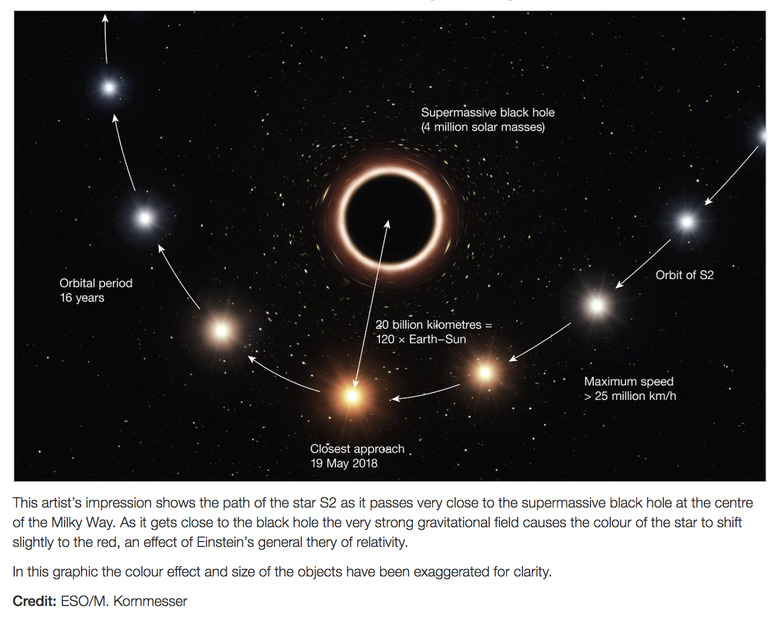Einstein's Theory Of Relativity Was Just Proven, Once Again
After more than 2 decades tracking one black hole, researchers observed a star move past, verifying Einstein's theory of relativity. This isn't the first time the theory's been proven, but it is one of the most instantly apparent and easily understood. Tracking the motion of a star as it moved past a supermassive black hole, researchers witnessed the effects of general relativity, just as Albert Einstein predicted.
The mass of the supermassive black hole at the center of our galaxy, the Milky Way, is 4 million times the mass of our Sun. That black hole goes by the name Sagittarius A*, and it is constantly the subject of studies by researchers around the world, here on Earth. The gravitational fields near this black hole are quite strong.

"The highly elliptical, 16-year-period orbit of the star S2 around the massive black hole candidate Sgr A* is a sensitive probe of the gravitational field in the Galactic centre," said the research paper on this topic, published earlier today. "Near pericentre at 120 AU ≈ 1400 Schwarzschild radii, the star has an orbital speed of ≈7650 km s−1, such that the first-order effects of Special and General Relativity have now become detectable with current capabilities."
Information was observed by and collected with the GRAVITY, SINFONI, and NACO instruments on ESO's Very Large Telescope (VLT). The star passed close enough to the black hole – and was observable, at the same time – in May of 2018. Research was compiled over the past few months until a paper could be written and released here in late July, 2018.
At its closest, the star was less than 20 billion kilometres from the black hole. This star was traveling at nearly 3% the speed of light, at 25 million kilometres per hour. That's around 15.5-million miles per hour, for those of you in the USA. That's pretty fast.
"This is the second time that we have observed the close passage of S2 around the black hole in our galactic centre," said Reinhard Genzel, Director, Max Planck Institute for Extraterrestrial Physics and main researcher on this project. "But this time, because of much improved instrumentation, we were able to observe the star with unprecedented resolution. We have been preparing intensely for this event over several years, as we wanted to make the most of this unique opportunity to observe general relativistic effects."
More information on this subject can be found in the research paper titled "Detection of the Gravitational Redshift in the Orbit of the Star S2 near the Galactic Centre Massive Black Hole", by the GRAVITY Collaboration. This paper will appear in the journal Astronomy & Astrophysics on 26 July 2018. One could find this paper with code doi.org/10.1051/0004-6361/201833052 (URL).
